Tomatoes are one of the most popular garden crops worldwide — and for good reason. Their rich flavor, versatility in the kitchen, and satisfying growth process make them a favorite for beginner and experienced gardeners alike. But while tomatoes can be easy to grow, getting the best yield and healthiest plants requires a little know-how.
If you’re aiming to grow juicy, flavorful tomatoes while saving time and effort, this guide will walk you through how to care for tomato plants efficiently — from planting to harvest.
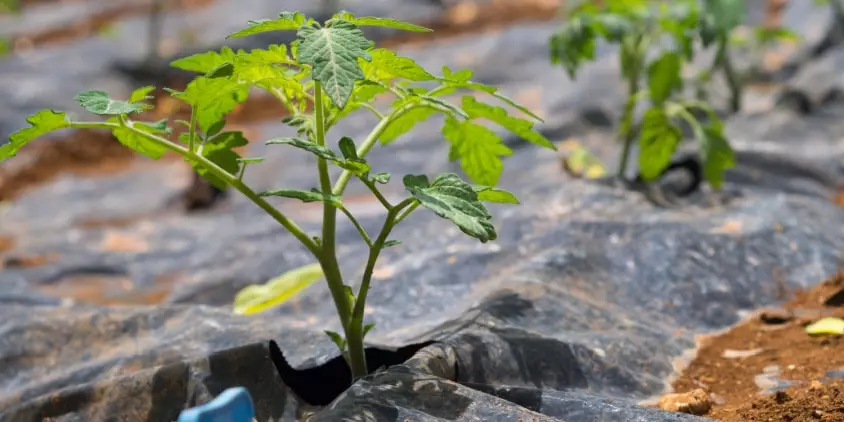
Why Grow Tomatoes?
Before diving into care tips, it’s worth noting why so many gardeners love tomatoes:
- They thrive in small spaces: Perfect for backyards, balconies, or patios.
- A wide range of varieties: From cherry tomatoes to beefsteaks and heirloom types.
- Nutrient-rich: Packed with vitamins C and K, potassium, and antioxidants.
- Fresh taste: Nothing compares to a sun-ripened tomato from your own garden.
Now, let’s explore how to grow them with minimal hassle and maximum success.
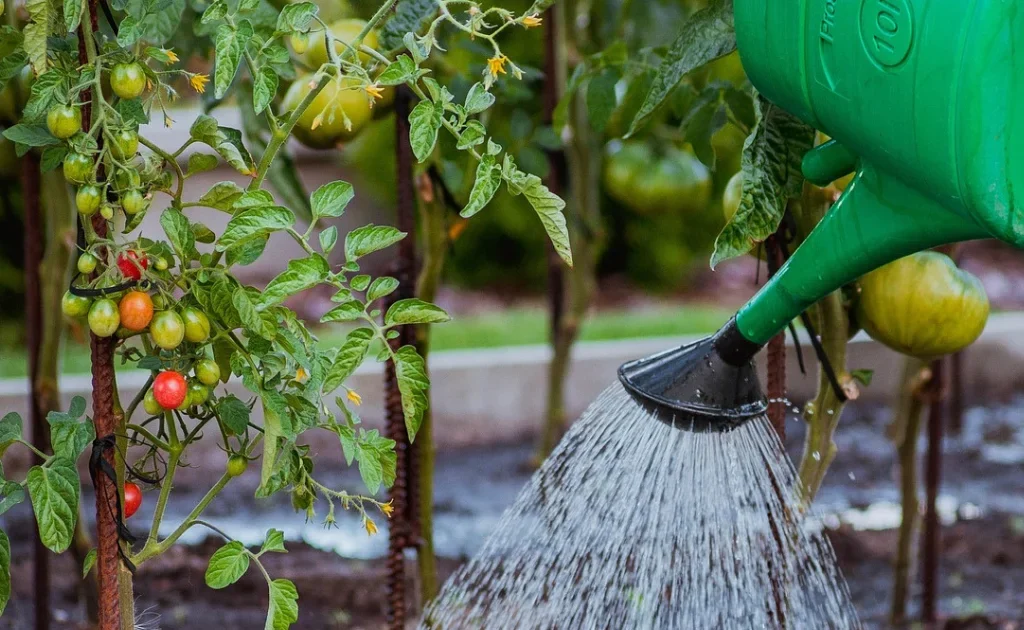
Choosing the Right Tomato Variety
Efficient tomato care starts with picking the right type for your space and climate:
- Determinate (Bush) Varieties: Compact, set fruit all at once, ideal for containers and small gardens. Example: ‘Roma’.
- Indeterminate (Vining) Varieties: Grow continuously, produce fruit throughout the season, need support. Example: ‘Beefsteak’ or ‘Cherry’.
- Heirloom Tomatoes: Old-fashioned varieties known for exceptional flavor but may require extra care.
Tip: Check your local plant nursery for varieties that perform well in your region.
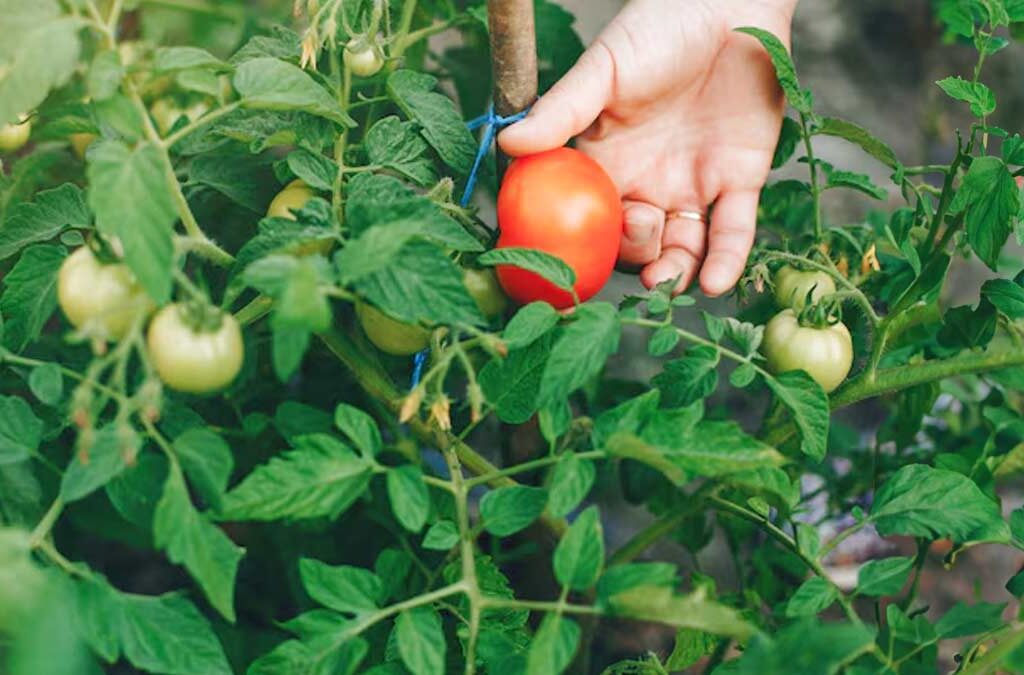
Preparing the Planting Site
Tomatoes love sunlight and well-drained, nutrient-rich soil. Follow these steps for an efficient planting site setup:
1. Choose a Sunny Spot
- Tomatoes need 6-8 hours of direct sunlight daily.
- Avoid shaded areas or spots prone to strong winds.
2. Prepare the Soil
- Loosen soil to a depth of 12–18 inches.
- Mix in organic compost or aged manure.
- Ensure the soil pH is between 6.0 and 6.8 (you can test this with an inexpensive soil test kit).
Efficient Tip: Add a balanced slow-release fertilizer when planting to reduce the need for frequent feeding later.
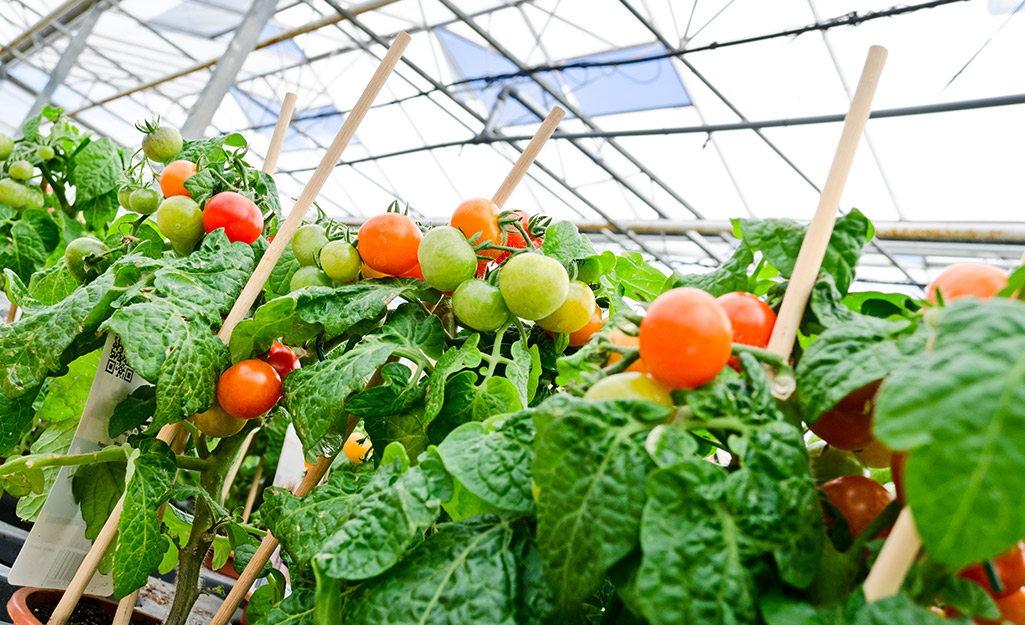
Planting Tomatoes the Smart Way
Timing is everything. Wait until the danger of frost has passed and soil temperatures are consistently above 60°F (16°C).
How to Plant:
- Dig deep holes or trenches. Tomatoes can root along their buried stems, so plant them deep, covering up to the first set of leaves.
- Space determinate varieties 18–24 inches apart, and indeterminate types 24–36 inches apart.
- Water thoroughly after planting.
Pro Tip: Place a handful of crushed eggshells or bone meal in the hole to prevent blossom-end rot (a common calcium deficiency issue).
Efficient Tomato Plant Care Tips
Once planted, tomatoes require consistent attention to grow efficiently. Here’s how to streamline their care:
1. Watering Wisely
- Water deeply and consistently to encourage strong roots.
- Aim for 1-2 inches per week.
- Water in the morning to reduce evaporation and prevent fungal diseases.
- Use drip irrigation or a soaker hose to deliver water directly to the base and keep foliage dry.
Avoid overwatering, which leads to root rot and weak plants.
2. Mulching for Moisture and Weed Control
Applying 2–3 inches of organic mulch (like straw, shredded leaves, or grass clippings) around your tomato plants:
- Retains soil moisture.
- Keeps soil temperature stable.
- Reduces weed growth.
- Prevents soil-borne diseases from splashing onto leaves.
Time-Saving Tip: Mulch once after planting, and you’ll save hours of weeding and watering.
3. Supporting Your Tomato Plants
Most tomato varieties need support to keep fruits off the ground and improve airflow.
Choose from:
- Cages: Simple and good for bush types.
- Stakes: Drive a sturdy stake into the ground and tie plants loosely with soft ties.
- Trellises: Ideal for vining varieties in larger spaces.
Supporting your tomatoes early prevents damage to branches and makes harvesting easier.
4. Feeding for Growth
Tomatoes are heavy feeders. For efficient care:
- Apply a balanced fertilizer every 3–4 weeks during the growing season.
- Use a low-nitrogen fertilizer once fruit starts forming to encourage fruit growth rather than foliage.
Organic options like compost tea or fish emulsion work wonderfully too.
5. Pruning for Health and Production
Regular pruning reduces disease risk and improves airflow and light exposure.
- Remove suckers (small shoots growing from the junction of stem and leaf) for indeterminate types.
- Trim lower leaves as plants grow to avoid soil contact.
- Prune excess foliage for better fruit ripening.
Quick Tip: Prune in the morning on dry days to reduce infection risk.
Identifying and Managing Common Tomato Problems
Even with the best care, tomatoes can face pests and diseases. Here’s how to handle them efficiently:
Common Pests:
- Aphids: Blast off with water or introduce ladybugs.
- Tomato Hornworms: Handpick or use Bt (Bacillus thuringiensis).
- Whiteflies: Use yellow sticky traps and neem oil.
Common Diseases:
- Blight (early and late): Remove infected leaves immediately. Avoid overhead watering.
- Powdery Mildew: Increase airflow and use sulfur-based organic fungicides.
- Blossom-End Rot: Ensure consistent watering and adequate calcium.
Efficient Strategy: Inspect plants twice a week for early signs of trouble. Quick action prevents major outbreaks.
Harvesting Tomatoes for Best Flavor
Tomatoes are best picked when they’re fully colored and slightly soft to the touch.
- Harvest daily in peak season.
- Use clean, sharp pruners to avoid damaging the plant.
- If frost is forecast, pick mature green tomatoes and ripen them indoors.
Pro Tip: Don’t refrigerate tomatoes unless fully ripe — cold temperatures ruin their flavor and texture.
End-of-Season Care
Once temperatures drop consistently below 50°F (10°C):
- Remove plants and compost healthy foliage.
- Dispose of any diseased plants to prevent overwintering pests.
- Clean and store cages or stakes.
Efficient Garden Hack: Add a cover crop (like clover or rye) to enrich soil for the next growing season.
Final Thoughts
Caring for tomato plants efficiently isn’t about cutting corners — it’s about smart, consistent practices that yield healthier plants with less effort. By choosing the right variety, providing proper soil, watering wisely, mulching, supporting, and pruning — you’ll enjoy a bountiful, flavorful harvest without the stress.
Whether you’re growing a few patio tomatoes or a full vegetable patch, these tips will help you make the most of your tomato-growing season.
Happy growing, and here’s to your juiciest, most flavorful tomatoes yet!

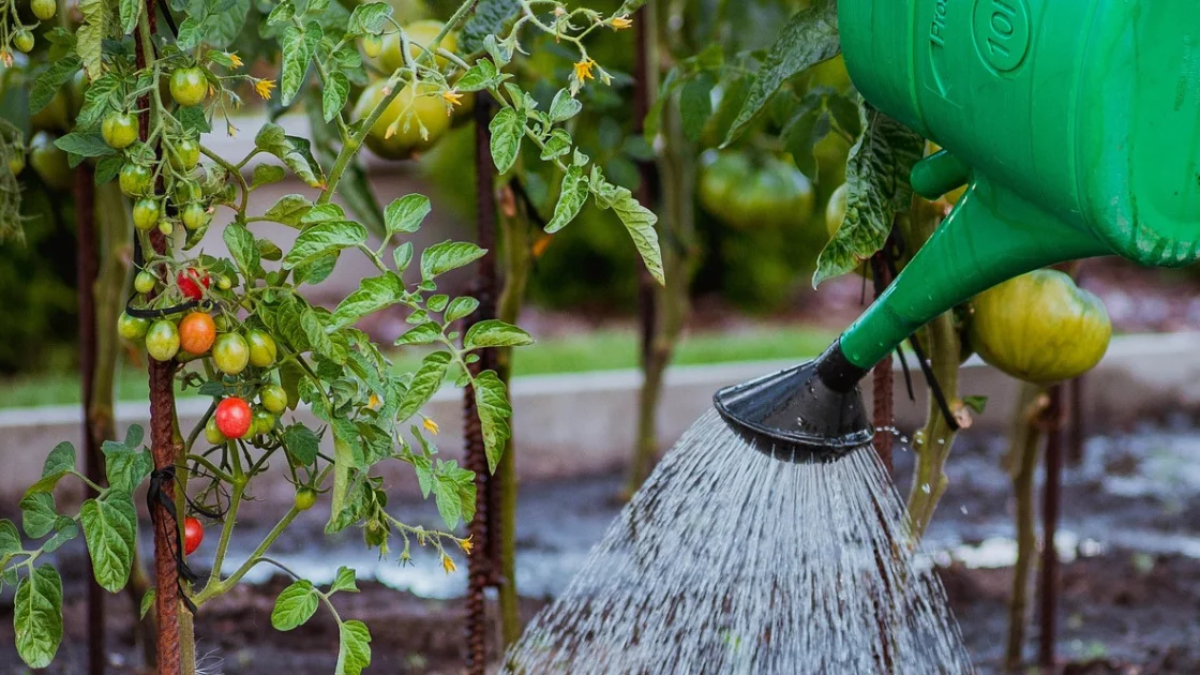



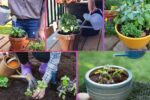
Leave A Comment